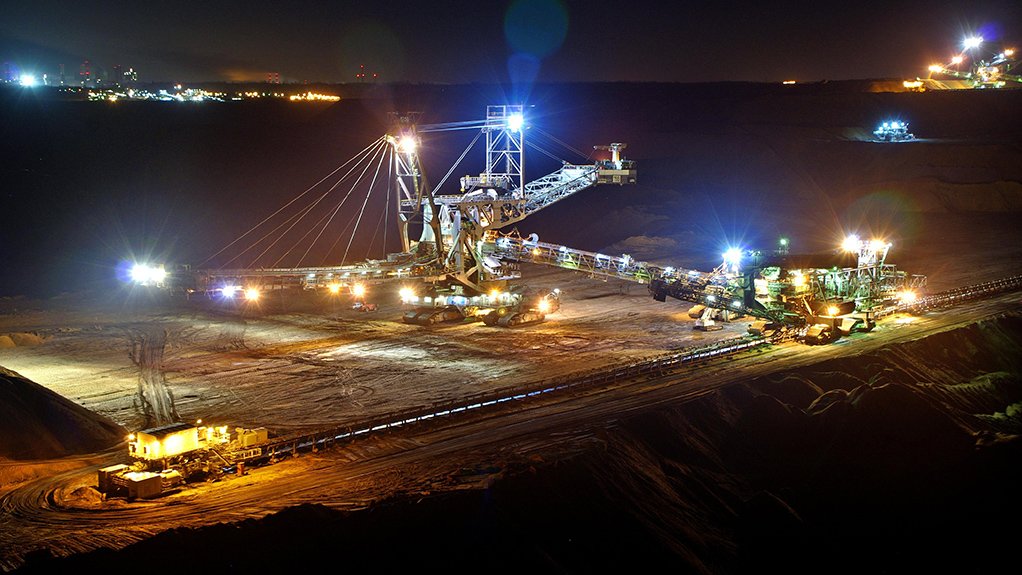
+27 11 441 1111
SRK House, 265 Oxford Road, Illovo, 2196, South Africa

Consultants offer energy efficiency planning, implementation


OPEN TO SUGGESTION Mines need to be more open to energy solutions being implemented during the planning phase, as opposed to once the mine has been constructed
Making a mine energy efficient requires plenty of planning, which ideally means proactively designing for efficiency from an early stage in a project, says consulting engineers and scientists SRK Consulting.
“Many mining companies are embracing new technology for energy efficiency, but there is still plenty of room for improvement,” says SRK Consulting principal mining engineer Joseph Mainama.
He adds that the move to battery-powered vehicles underground, is quite well established, however, “it is still much easier to achieve efficiency benefits when designing a new project; trying to upgrade an existing mine is much more challenging”.
“Improving energy efficiency must always be considered early in the planning stages, when it is easier to do,” SRK Consulting principal mechanical engineer Chris Smythe concurs.
He says that good planning upfront is much more cost-effective – and less time-consuming – than making modifications to an existing plan, or even after construction.
Addressing the efficiency contribution of battery-powered vehicles, Smythe highlights direct and indirect benefits.
Battery technology allows a more efficient transfer of energy to work than diesel engines; this reduces energy losses while improving the equipment’s performance.
Better productivity from an equivalent – or reduced – energy input equates to improved efficiency.
“Battery-driven vehicles also generate much less heat than diesel engines, so there is an indirect benefit for underground operations in reducing the energy required for ventilation purposes,” he says.
“Ventilation is a significant consumer of energy in underground mines – introducing fresh, cool air and removing high concentrations of diesel particulate matter produced by diesel-powered vehicles.”
However, the energy efficiency drive in the mining sector is based not only on saving energy in order to reduce costs; it is also a response to environmental, social and governance (ESG) imperatives related to climate change.
The important move to battery or other electrical technologies needs, therefore, to be considered in light of how the mine’s electricity is generated in the first place.
While Scope 1 carbon emissions are directly generated by the operation, a mine’s carbon footprint will also include Scope 2 ‘indirect’ emissions – those related to electricity purchased by the mine.
Self-Generation With Renewables
SRK Consulting principal mining engineer Jaco van Graan points out that, in a country like South Africa, using technologies like overhead powerlines to power trucks does not necessarily lower the carbon footprint.
This is simply because the mine’s electricity is sourced from the national grid, which is supplied predominantly by coal-fired stations.
“To reduce the carbon impact of their energy usage, many European mines create their own clean electrical power – mostly with wind as the [energy source],” says Van Graan.
Additionally, large mining companies in South Africa have for some time been exploring the generation of their own renewable energy, although progress has been slow.
“The recent raising of the licensing exemption threshold for embedded generation facilities should boost this trend.”
There is growing pressure on companies generally to reduce their carbon footprint, according to SRK Consulting director, partner and principal consultant Andrew van Zyl.
This is likely to affect early-stage design decisions about energy usage in mining projects.
“Mining companies are certainly considering options and applying innovations where they can,” says Van Zyl.
“Certain funds have even stated they will not invest in companies which can’t meet certain carbon emission targets.”
He points out that this is a factor in many South African companies’ enthusiasm about generating their own power from renewable sources.
As the country’s regulatory environment for energy is developed, this is likely to attract funding institutions and lead to more progress on this front.
However, he adds that while energy supply solutions like hybrid power plants can be a key pillar of a positive project decision, it is vital that there is regulatory certainty and a viable financial model.
Power for Pumping
Apart from haulage and ventilation, the pumping of water is another area where mines consume considerable energy, says Smythe.
“In terms of improved energy efficiencies in the pumping equipment, this tends to be incremental, with improvements in materials and drive efficiencies,” he says.
“Mines’ emphasis is on reducing the amount of water to be pumped, reducing pump heads by recycling to service water and pumping during off-peak periods to even out the grid demand.”
He also notes that, where a high enough head permits, mines have been running underground turbines on the service water that is being sent underground.
This has the effect of both generating power back to the grid, as well as reducing the temperature of the service water.
Carrying the Load
Designing energy efficiency into projects needs to come from both the client and the consultant, notes SRK Consulting design engineer Kenny Mahuma.
Load studies are carried out during the study phase of the project, he explains, and are firmed up during the detailed design phase.
“This ensures that the agreed Notified Maximum Demand (NMD) applied for by the mine will meet the power requirements of the whole mine,” he says.
Over-estimation of NMD is as much a concern as under-estimation, as it will incur additional fixed costs, he adds.
He points out that two of the most common energy-related technologies installed by mines in recent years have been photovoltaic (PV) power plant systems, and variable speed drives (VSDs).
While PV systems reduce the carbon footprint by replacing a level of coal-generated power, VSDs reduce the peak power required by the ubiquitous electric motors found in every aspect of mining.
“Most clients will highlight energy efficiency at the beginning of the project and might offer suggestions,” said Mahuma. “However, it is the duty of the designer to explore all possibilities and guide the client appropriately.”
For the mining sector, the message is clear: using less energy has become an operational and cost imperative, as well as a key ESG requirement that must be designed into any new development.
Fortunately, there is a growing technological base to help make this happen, he concludes.


